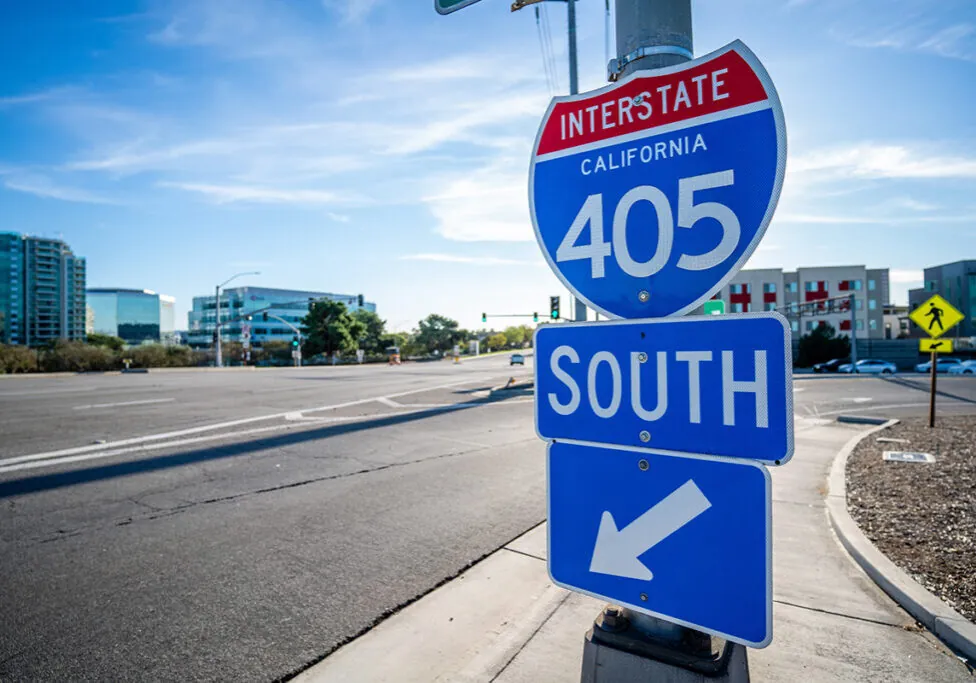As national awareness of the years-long opioid crisis has grown, so have legal efforts to hold drug companies accountable. As of 2019, 45 states have filed lawsuits against Purdue Pharma alone. Purdue, manufacturer of the drug OxyContin, has become the de facto face of the opioid epidemic. But the scope of the legal wrangling over the consequences of the opioid epidemic—and the cynical choices made by manufacturers, distributors, and doctors which fueled it—is far larger.
In total, 48 states, and over 2,000 local and tribal governments and organizations have filed lawsuits against opioid manufacturers, many of which have been consolidated in the state of Ohio under the National Prescription Opiate Litigation. The first federal trial is scheduled for October 21, 2019.
In California, thirty counties across the state have joined forces to sue both the manufacturers and distributors of prescription opioids. The lawsuits claim that drug manufacturers deliberately misinformed doctors and patients alike of the addictiveness of their products. They also assert that the distributors of the products failed to properly control shipments of opioids, in violation of the federal Controlled Substances Act.
Even tribal communities are up in arms. In July 2018, the Swinomish Indian Tribal Community filed a lawsuit against multiple pharmaceutical companies in the U.S. District Court in Seattle, Washington. They joined a growing number of state, federal, and sovereign governments attempting to hold the industry responsible for its contributions to the opioid crisis. Named in this lawsuit were many familiar “big pharma” giants: Purdue Pharma, Endo Pharmaceuticals, and Janssen Pharmaceuticals, a subsidiary of Johnson & Johnson.
Liability in these lawsuits hinges on accusations of false advertising, and the failure of distributors to adequately monitor and control the supply. There exists plenty of evidence and research to support these claims. But despite some recent successes against the industry in the courts, the lawsuits face considerable legal headwinds, and the pharmaceutical industry is braced to take advantage of them.
The argument for false advertising has proven difficult for the industry to fend off in court.
Opioids are a class of painkillers that have been heavily prescribed by doctors across the United States to patients experiencing “chronic pain.” The most commonly prescribed opioids are OxyContin and Percocet (trade names for oxycodone), Vicodin (hydrocodone), and fentanyl, a synthetic painkiller resembling opium-derived morphine and heroin.
The opioid crisis reached a new peak in 2017, with overdoses killing over 72,000 Americans that year. According to the CDC, nearly 218,000 people have died in the US alone from opioid overdoses, with 2017’s deaths being five times greater than those recorded nearly two decades earlier in 1999.
Drug manufacturers have long advertised opioids as both a safe and effective alternative to other forms of pain treatments. This has persisted even in the face of evidence that directly suggests the opposite.
In 1980, a letter to the New England Journal of Medicine was published by a pair of doctors. They claimed that addiction to opioids was a very rare occurrence among hospitalized patients. It concluded that for patients subjected to opioids with no prior history of addiction, the risks were minimal. The letter, lasting all of five sentences, contained little in the way of substantive evidence. However, it was cited over 600 times by various pharmaceutical companies in their marketing efforts aimed at doctors wary of the addiction risks.
Among the manufacturers aggressively citing the letter was Purdue Pharma.
Between 1996 to 2002, Purdue funded over 20,000 pain-related education programs. Among their initiatives included financial support for the American Pain Society, the American Academy of Pain Medicine, and many other organizations focused on the diagnosis and treatment of pain. These groups advocated for more aggressive diagnosis of chronic pain, and increased recommendations to use opioids in treating it. Their efforts intensified as the company introduced OxyContin in the mid-1990s.
Similar marketing campaigns continue to this day. The Pain & Policy Studies Group offers one of the starkest examples of efforts to discount the addiction risks of opioids. Their glossary contains an entry for “opiophobia,” describing a “phenomenon” of exaggerated concern over addiction to opioids that prevents the appropriate use of the drugs.
Some of the lawsuits focus on the role that drug distributors played in the opioid crisis, and how they enabled pharmacies to overprescribe drugs to victims.
Many of the lawsuits, including those filed by California counties, claim that major drug distributors failed their responsibility to control and monitor the products they shipped. Pharmacies serving small communities often received shipments of opioids that far exceeded their needs.
West Virginia, one of the states hardest hit by the epidemic, saw over 780 million pills delivered to pharmacies serving a total of 1.8 million residents between 2007 and 2012–433 pills for every resident.
Investigative reporting by the Charleston Gazette-Mail suggests that distributors ignored state and federal laws, allowing shipments to proceed unfettered for years even in the face of potentially suspicious order amounts. Additionally, the state Board of Pharmacy failed to enforce regulations that existed since 2001. The board even provided doctored inspections and reviews to small-town pharmacies that were consistently ordering far more pills than necessary.
Another major warning sign of the developing opioid crisis was the increase in orders for higher doses per pill. In the Gazette-Mail’s investigation, official order counts for OxyContin tablets show a marked increase in orders for higher dosage pills, increasing from 5 milligrams to 15 milligrams. As resistance to opioids grows with regular use, addicts often sought the higher dose pills. If they could not get the prescriptions, they would steal the pills; ample supply to draw from was never in question. And if they could not buy or steal them, heroin was a potent alternative with oftentimes lethal consequences.
The lawsuits contend that the distributors had not performed their due diligence. They were in the best position to call attention to excessive shipments and limit them while investigations into the orders proceeded.
While the lawsuits cite ample evidence about false advertising or negligence throughout the pharmaceutical industry, potential legal obstacles may affect the outcomes.
When the FDA approved of oxycodone in the 1970s, it was classified as a Schedule II drug. This meant that the drug, available since 1939, was formally recognized as having a high potential of addiction and abuse.
Purdue Pharma introduced OxyContin as an abuse-resistant alternative to other forms of oxycodone. The FDA initially approved the drug in 1995 for short-term use. But in 2001, the FDA bowed to pressure from Purdue Pharma, and approved expanded labeling of OxyContin for general long-term “around the clock” use for anyone suffering from chronic pain. The drug maker went on to use the FDA’s expanded umbrella of approval to deflect criticism from its marketing efforts.
Six years later, Purdue would admit in court that it knew the drugs represented a serious addiction risk, and chose not disclose this information to government officials. In a 2007 trial, the company pled guilty to misbranding OxyContin, resulting in a $630 million penalty.
Other manufacturers have pointed fingers at the distributors, and distributors responded by pointing back to the manufacturers or further down the supply chain towards the pharmacies and doctors writing the prescriptions.
Further complicating the issue is that prescription opioids are hardly the only source of concern in the overall epidemic. Heroin, cocaine, and other recreational street drugs continue to kill tens of thousands every year. Fentanyl, one of the most powerful opioids available, killed more than 20,000 people in 2016 alone. The argument potentially to be made is that responsibility for the overall opioid epidemic, and all the lives it has claimed, cannot be placed on the shoulders of the pharmaceutical companies alone. Attacking them would not resolve the other routes these drugs can take to get to the streets.
Some industry experts place the blame on doctors, many of whom were influenced by industry marketing and educational initiatives. Before the epidemic truly began, opioids were viewed with distrust among medical professionals in the United States. But after the introduction of OxyContin, companies like Purdue Pharma spent considerable sums to reverse their “perceptions” of opioids. The industry has argued that if doctors were aware of the risks posed by the drugs, why would they continue filling out prescriptions?
Pill mills and foreign sellers are being used to further deflect attention away from the role of manufacturers and distributors in the crisis.
The industry claims that holding it liable for selling its products ignores another very real problem at the opposite end of the opioid chain: pill mills. A pill mill allows addicts to easily acquire their drugs with minimal fuss and no insurance, so long as they can pay the prices being asked.
These operations can consist of individual doctors or pharmacy workers, to full-blown businesses operating under the guise of a legitimate pharmacy. The cash can come easy and fast, so long as people are willing to part with the ample supply “off the record.”
One of the most extreme examples of this is Dr. Barry Schultz of Florida, who overprescribed opioids to his patients to a degree that was almost incomprehensible. He prescribed one patient more than 23,000 high-dose oxycodone pills over a period of 8 months—more than 100 pills per day. Another received 17,000 a period of 7 months.
At least two of Schultz’s patients died of overdoses in 2010—one who overdosed on the prescribed pills, and another who became addicted and died of a methadone overdose.
Florida state attorney Dave Aronberg described Schultz as one of Florida’s “most notorious drug dealers.” Schultz was arrested, and in 2015 a jury convicted him on 55 of 74 charges of drug trafficking. Originally sentenced to 25 years in prison, an appeals court found that his sentence was too light, and re-sentenced him to a term of 157 years.
But Schultz is only one example among the many countless ‘legitimate’ practices across the country prescribing and selling opioids in extreme amounts.
Of additional concern is the role transnational crime organizations have had in distributing opioids. The Sinaloa Cartel has been flooding the U.S. with supplies of fentanyl, sourced from Chinese factories. Additionally, shipments of heroin have similarly increased to take advantage of users in search of a high. Pharmaceutical manufacturers and distributors are pointing to these illicit providers as a more critical concern, in hopes of deflecting attention away from themselves.
Despite industry efforts to deflect blame, there have been some limited successes in holding companies accountable.
The state of Oklahoma won a landmark case against Johnson & Johnson in August 2019. A judge ordered the pharmaceutical company to pay a total of $572 million for its role in Oklahoma’s own opioid crisis. The case was closely followed by legal experts and plaintiffs who have filed lawsuits against other drug manufacturers. It had been predicted that the case might cost the company more than $2 billion dollars. But the award fell short of that, and was significantly less than the $17.8 billion the state asked for. Oklahoma claimed it would need at least that much money over the next 30 years to fund efforts to help those affected by the crisis.
It is not the first time Oklahoma has seen its efforts blunted in court, or even before trial. In March 2019, the state settled with Purdue Pharma for a total of $270 million, one day after the state Supreme Court denied the company’s appeal to delay the trial. Oklahoma Attorney General Mike Hunter, who filed the lawsuit in 2017, originally sought a total of $20 billion. The state also settled with Teva Pharmaceuticals in May 2019 for a total of $85 million.
In Ohio, two manufacturers have pursued settlements in hopes of avoiding a trial. Endo International and Allergan have been negotiating with two countries in the state, for settlements of $10 million and $5 million respectively. These settlement efforts are connected to Ohio’s National Prescription Opiate Litigation (NPOL), which currently encompasses nearly 2,000 individual cases from all over the US against 22 opioid manufacturers.
While these settlements do not come close to the full damages being asked, there are some signs that the industry is feeling the pressure, and may be seeking greater settlements in hopes of heading off impending trials. Johnson & Johnson is also rumored to be negotiating a settlement behind closed doors. Purdue Pharma has offered up to $12 billion in order to settle claims against the company, the largest known offer by any drug manufacturer involved in the NPOL. The deal would force Purdue to declare bankruptcy, and remove ownership of the drug maker from the multi-billionaire Sackler family.
The Sacklers—the longtime owners of Purdue Pharma—have long been at the center of the opioid epidemic, repeatedly denying the company’s responsibility for its dangerous marketing of OxyContin.
Purdue Pharma has claimed that characterizations of the Sacklers’ involvement in the day-to-day operations are tainted with bias. The Sacklers themselves have vigorously denied personal involvement with the crisis, even in the face of mounting evidence showing otherwise.
As opioid overdose deaths began to spike in the early 2000s, Richard Sackler, then president of Purdue Pharma, advised the company in a 2001 email to shift blame for opioid overdoses on the victims themselves, describing them as “abusers” and “reckless criminals.” This email was sent out the same year the FDA approved expanded labeling of the drug for long-term use.
A blistering press release from Minnesota Attorney General Keith Ellison in August 2019 showed further evidence of the Sackler’s direct involvement. Ellison also showed that by 2014, the company was not only internally acknowledging the dangers of OxyContin and other opioids, it was seeking to expand its business by developing and marketing drugs for treating opioid addiction through a secret internal initiative named “Project Tango.” This new evidence will likely be the subject of much deliberation at the federal trials, should they proceed.
If drug makers fail to reach a settlement in Ohio, the trial will signal the start of litigation that has been compared to the Tobacco Master Settlement Agreement of 1998. The industry could potentially face not only significant financial losses, but also the shuttering or restriction of the various means it has used to market immensely profitable opioid-based medications as safe drugs with minimal chances of addiction.
But a settlement could not only put a stop to the Ohio NPOL. It could forestall any efforts to shut down the marketing channels that Big Pharma has exploited for decades. The opioid epidemic may be far from over.
Originally published on July 27, 2018
Updated August 30, 2019
This blog is not meant to dispense legal advice and is not a comprehensive review of the facts, the law, this topic or cases related to the topic.



